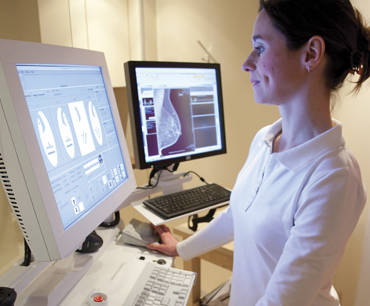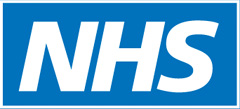In the medical world, image interpretation plays a central role in a whole host of clinical situations – from A&E through to antenatal care and paediatrics. This can involve a range of techniques from the latest MRI scans through to ultrasound and X-rays. Whatever the scenario, it’s essential that referrers and radiographers have the right skills to interpret the results promptly and precisely – ensuring the best patient care and treatment.
The Image Interpretation elearning programme, which has been developed by the UK Society and College of Radiographers and elearning for Healthcare, helps learners to gain the skills and understanding to perform this role effectively.
A high-quality radiography course
Launched in 2009, the programme was originally aimed at radiographers but it is also invaluable for doctors, nurses, and medical/radiography students, who need to review images in their day-to-day work.
Accessible online, the learning modules cover all aspects of radiological imaging, from plain radiography through to cross-sectional imaging and ultrasound as well as topics such as caring for people with special needs and dealing with children.
“Learners can select modules that are relevant to their training or work and study online at their own pace,” explains Dorothy Keane, Clinical Lead for the Image Interpretation programme.
The learning content is written by specialist radiographers and academics from a variety of fields. Editorial oversight is provided by Dorothy to ensure consistency in terms of tone, style and content.
A visual learning tool

The Image Interpretation programme is packed with interactive elements, such as images, video clips and self-assessment questions.
“The programme includes lots of high-quality images from real patient cases as well as reflective exercises,” explains Charlotte Beardmore, Director of Professional Policy at the Society and College of Radiographers.
“Of course, we all learn much more effectively when we reflect and this elearning programme helps support deeper thinking and understanding,” she says.
“We have made the programme as realistic and patient focused as possible,” adds Dorothy. “So, you can follow a patient on their journey, from reviewing their clinical history through to analysing a scan and reporting on your findings.
“You can also gain feedback on your performance and go back to any questions you don’t get right the first time.
“This helps practitioners to gain confidence and experience in interpreting results in a virtual clinical setting – which can only help to improve patient care in the real world,” says Dorothy.
Flexible training for radiographers
As an elearning tool, Image Interpretation provides access to standardised content – meaning that all healthcare professionals are trained using the same high-quality resources. It also enables healthcare professionals to train in their own time, around their work commitments.
“The modules are arranged into bite-sized learning sessions that take around 30 minutes to complete,” says Dorothy. “So, they fit in with a busy professional life.”
Learners can track their progress online and print or download certificates as evidence for their training portfolios or for re-registration. The training is designed to support and enhance traditional learning approaches.
Since its launch, the Image Interpretation programme has delivered impressive results. One research study showed that it improved medical students’ chest x-ray interpretation skills by 50 per cent1.
“Feedback from users has been extremely positive but we’re constantly striving to improve the programme – with patients’ needs at the forefront of our minds at all times,” says Dorothy.
Upcoming developments
The content is continually updated to ensure that it reflects the latest developments in the field.
“We’re currently undertaking a programme review, replacing all the computerised radiography with digital images,” explains Dorothy. “This is a major undertaking given the number of images across the programme but it’s vital that our elearning reflects the latest workplace techniques.”
New CT and MRI anatomy modules are also under development, as well as sessions on innovative PET scanning technologies.
“We’re always looking several years ahead to see what we can do to support practitioners using emerging technologies,” explains Dorothy.
“Our goal is to ensure that healthcare professionals are able to give timely, accurate information to improve patient care, whatever the situation,” she concludes.
In many clinical scenarios, this could make all the difference between life and death.
For further information on the Image Interpretation programme follow this link
Customised learning packages can be developed for organisations looking to train their teams on specific aspects of image interpretation. Please contact us for details.

1Tamaklo E. Can elearning improve medical students’ ability to interpret chest X-rays in comparison with electronic text? Poster, Association for the Study of Medical Education, 2012



